Advertising History: David Droga’s 1998 interview with Campaign Brief Asia – before he was elevated to ‘Saint David’ he was ‘King David’
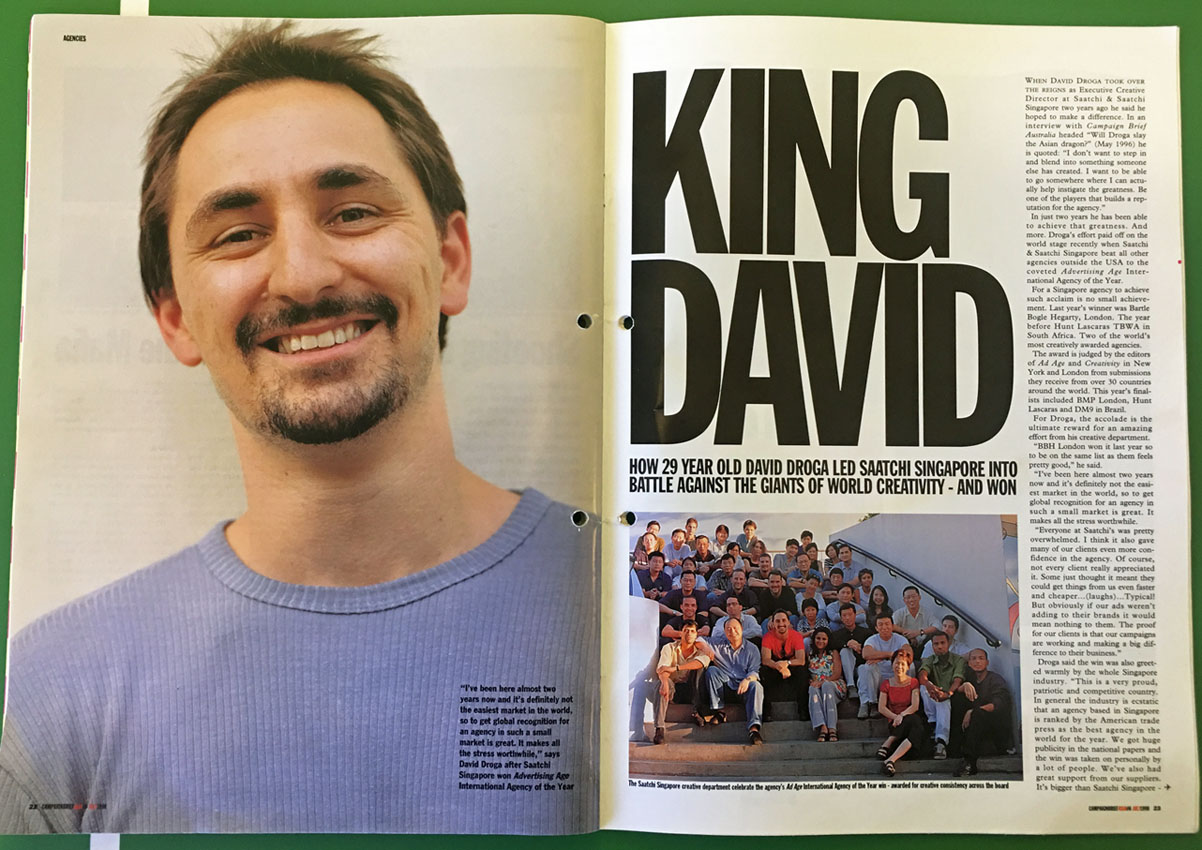 A week ago, at the final awards presentation of the 2017 Cannes International Festival of Creativity, David Droga was honoured with the Lion of St Mark award.
A week ago, at the final awards presentation of the 2017 Cannes International Festival of Creativity, David Droga was honoured with the Lion of St Mark award.
The award is the highest individual honour a creative person can receive at Cannes. Reserved for the very elite – Sir John Hegarty, Lee Clow, Dan Wieden, Marcello Serpa, Joe Pytka and Bob Greenberg are previous honourees.
Droga is Australia’s greatest and most successful Advertising export. The whole of Australia, and indeed Asia – where his 2 year stay saw him elevated to legend status – is immensely proud of him. On returning from Cannes we became a bit sentimental and dug out this old interview with him. What follows is a reprint of Campaign Brief Asia’s July 1998, 8 page interview with him. We interviewed Droga straight after the announcement that his agency, Saatchi & Saatchi Singapore, had won the AdAge International Agency of the Year award. A very big deal at the time, especially when you consider that Droga was only 29 years old.
We ran with the headline “KING DAVID”, something he was a bit embarrassed about, but we suspect deep down, loved at the time. The humility, respect and generosity he showed with his great Lion of St Mark acceptance speech in Cannes shows through in this interview from nearly 20 years ago. Read on…
KING DAVID
How 29 year old David Droga led Saatchi Singapore into battle
against the giants of world creativity, and won.
(July, 1998) When David Droga took over the reigns as Executive Creative Director at Saatchi & Saatchi Singapore two years ago (1996) he said he hoped to make a difference. In an interview with Campaign Brief headed “Will Droga slay the Asian dragon?” (May 1996) he is quoted: “I don’t want to step in and blend into something someone else has created. I want to be able to go somewhere where I can actually help instigate the greatness. Be one of the players that builds a reputation for the agency.”
In just two years he has been able to achieve that greatness. And more. Droga’s effort paid off on the world stage recently when Saatchi & Saatchi Singapore beat all other agencies outside the USA to the coveted Advertising Age International Agency of the Year.
For a Singapore agency to achieve such acclaim is no small achievement. Last year’s winner was Bartle Bogle Hegarty, London. The year before Hunt Lascaras TBWA in South Africa. Two of the world’s most creatively awarded agencies. The award is judged by the editors of Ad Age and Creativity in New York and London from submissions they receive from over 30 countries around the world. This year’s finalists included BMP London, Hunt Lascaras and DM9 in Brazil.
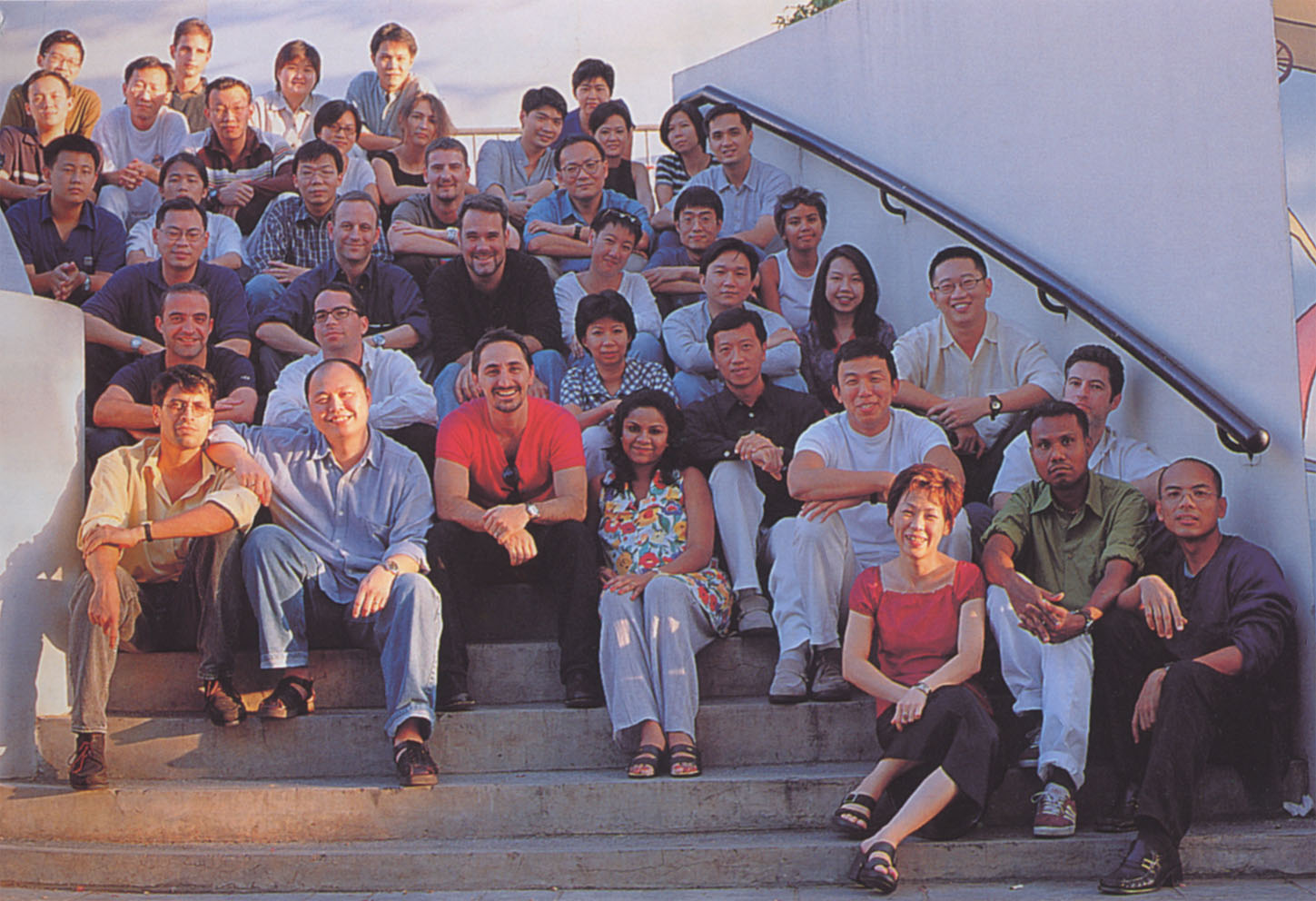 For Droga, the accolade is the ultimate award for an amazing effort from his creative department.
For Droga, the accolade is the ultimate award for an amazing effort from his creative department.
“BBH London won it last year so to be on the same list as them feels pretty good,” he said. “I’ve been here almost two years now and it’s definitely not the easiest market in the world, so to get global recognition for an agency in such a small market is great. It makes all the stress worthwhile.
“Everyone at Saatchi’s was pretty overwhelmed. I think it also gave many of our clients even more confidence in the agency. Of course, not every client really appreciated it. Some just thought it meant they could get things from us even faster and cheaper…(laughs)… Typical! But obviously if our ads weren’t adding to their brands it would mean nothing to them. The proof for our clients is that our campaigns are working and making a big difference to their business.”
Droga said the win was also greeted warmly by the whole Singapore industry.
“This is a very proud, patriotic and competitive country. In general the industry is ecstatic that an agency based in Singapore is ranked by the American trade press as the best agency in the world for the year. We got huge publicity in the national papers and the win was taken on personally by a lot of people. We’ve also had great support from out suppliers. It’s bigger than Saatchi Singapore it has made the world focus turn to this part of Asia. It proved that a big agency in a small country of just over 2 million people can compete with the rest of the world. There are people in the United States turning to their maps and saying ‘where the hell is Singapore?”
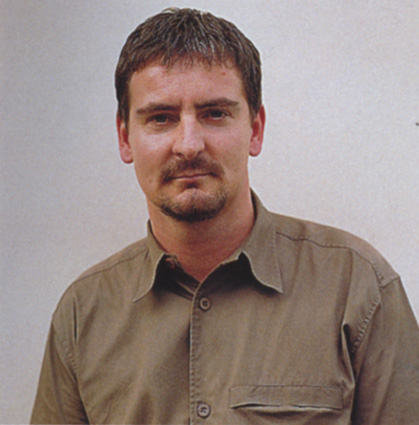 Undoubtedly one of the major factors that would have impressed Advertising Age is the creative consistency Saatchi & Saatchi Singapore has been able to achieve across their entire client list. It is a rare achievement in Asia – in fact it is rare to all but the very best creative agencies in the world.
Undoubtedly one of the major factors that would have impressed Advertising Age is the creative consistency Saatchi & Saatchi Singapore has been able to achieve across their entire client list. It is a rare achievement in Asia – in fact it is rare to all but the very best creative agencies in the world.
In submitting for International Agency of the Year, a showcase of around 20 ads have to be forwarded with no more than two ads from any one client.
“For me one of my major objectives from the start has been to attain this high creative standard across the board with all clients,” said Droga. “Being able to do great work on smaller clients is always much easier than doing it for a big multi-national that has so many guidelines to their advertising. Here, in fact, it’s our bigger clients that are the ones we are pushing hardest on. Sure we’ve done some good work on the small ones, but the majority of awarded work is done on the agency’s largest clients like Navy, Hewlett Packard, Hutchison, and Qualcomm.
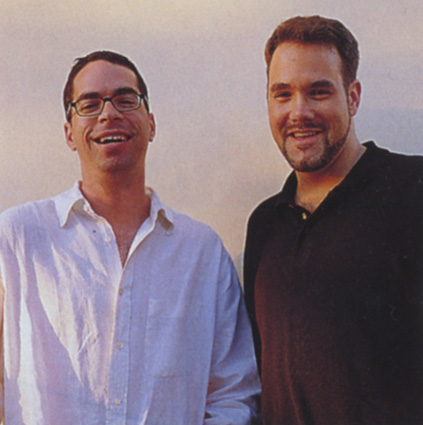 “A lot of agencies in the region are busy trying to write stuff for only a small percentage of their clients – my objective has been to try to do it for every client. We haven’t succeeded with them all yet, but hey, that’s the objective.”
“A lot of agencies in the region are busy trying to write stuff for only a small percentage of their clients – my objective has been to try to do it for every client. We haven’t succeeded with them all yet, but hey, that’s the objective.”
Droga said when he first arrived at the agency he chose the most conservative client – the one everyone said would be the hardest to turn around, the one no creative wanted to work on and worked on it himself. He used it as a showcase to create good advertising. He did not want to do it just for the client, he wanted to signal to the entire agency that he was serious about creative standards. If it could be done on that client then there was no reason it couldn’t be done with any other at the agency. It was Droga’s way of upping the ante.
“For me, as much fun as it is being involved in all the great work to come out of the agency, I also get a lot of satisfaction out of how we have been able to turn around clients that many other agencies may have thought was impossible”.
Probably one of the best examples of this is Singapore Navy, one of Droga’s favourite clients. Traditionally their advertising had been much like most government clients – highly conservative, very straightforward and very simple.
But Saatchi’s recent work has taken them quantum steps, injecting a strong personality that Droga says has paid dividends.
 Hewlett Packard, another of the agency’s huge blue chip clients, previously known for its bland ads, is also enjoying the benefits of a fresh creative perspective. Saatchi’s latest TVC ‘Aliens’ has now been picked up across the whole of Asia, Europe and Latin America. In fact it was recently voted Singapore’s most popular commercial in an annual competition run by the country’s largest television network.
Hewlett Packard, another of the agency’s huge blue chip clients, previously known for its bland ads, is also enjoying the benefits of a fresh creative perspective. Saatchi’s latest TVC ‘Aliens’ has now been picked up across the whole of Asia, Europe and Latin America. In fact it was recently voted Singapore’s most popular commercial in an annual competition run by the country’s largest television network.
However another more striking example of bold advertising for a large client is Hutchison Paging. This ad not only challenged the telecommunications category, it challenged Singaporean society. Essentially the ads told people not to go to work t
oday. In a country renowned for its strong work ethic, it was considered a risk. Obviously the ad struck a nerve with the target audience. The subscription rate exceeded the client’s forecast by an impressive 300%.
Even Visa has decided to ‘push the envelope’ with Droga. And their most recent corporate commercial does that. It’s an ad which just seems to grow and grow the longer you watch it.
However, not every client of the agency is looking for change in the conventional way. Take Procter & Gamble, one of the world’s largest and most visible advertisers.
 “With all clients you have to look at the category first and then try to make improvements in stages. For us our first objective was to make a dramatic improvement to their production values. P&G are obviously pretty happy with this. At a recent P&G global meeting, Saatchi Singapore was named one of their top three agencies world wide for ‘Quality in TV production”. Considering this client has over 300 agencies around the world, this is no small feat. Thanks to Haydn Evans (Saatchi’s Head of TV) and the guys, great directors are now seeing P&G as an opportunity,” said Droga.
“With all clients you have to look at the category first and then try to make improvements in stages. For us our first objective was to make a dramatic improvement to their production values. P&G are obviously pretty happy with this. At a recent P&G global meeting, Saatchi Singapore was named one of their top three agencies world wide for ‘Quality in TV production”. Considering this client has over 300 agencies around the world, this is no small feat. Thanks to Haydn Evans (Saatchi’s Head of TV) and the guys, great directors are now seeing P&G as an opportunity,” said Droga.
“When you do good work on big brands you get recognition and that’s how you earn new business. You are never going to get a big piece of business to walk in the door because you did a great at for a coffee shop”.
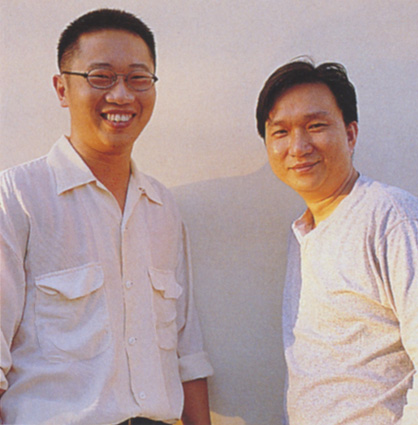 Saatchi Singapore’s creative credits are indeed impressive. In addition to Ad Age’s top accolade they bagged two Silvers, one Bronze and 11 Finalists at The One Show (5th best agency performance in the world), had five entries accepted into D&AD this year, picked up Gold, Silver and five Bronze at the Clio Awards (top 10 in the world) and scored a Gold and also tow Silver Lions at Cannes last year. At AWARD, Australia’s top award show, the agency picked up three Bronze awards and had an amazing 31 Finalists. And in the Asia Pacific Awards they amassed three Gold, four Silver and two Bronze awards. (Ed note: This was in the days when award shows only had a limited amount of categories).
Saatchi Singapore’s creative credits are indeed impressive. In addition to Ad Age’s top accolade they bagged two Silvers, one Bronze and 11 Finalists at The One Show (5th best agency performance in the world), had five entries accepted into D&AD this year, picked up Gold, Silver and five Bronze at the Clio Awards (top 10 in the world) and scored a Gold and also tow Silver Lions at Cannes last year. At AWARD, Australia’s top award show, the agency picked up three Bronze awards and had an amazing 31 Finalists. And in the Asia Pacific Awards they amassed three Gold, four Silver and two Bronze awards. (Ed note: This was in the days when award shows only had a limited amount of categories).
For all the creative success Saatchi Singapore has had, they have also increased their billings by about 35% and their staff has grown from 85 people to 125 over the past 18 months. All at a time when most other agencies are downsizing over the current Asian economic crisis.
“Creative success is certainly one of our objectives,” says Droga. “However it is meaningless if the agency and clients don’t enjoy the benefits. There’s no joy in winning an award if you have to retrench people the next day because you’re neglecting the business. I’m sure our head office in New York is proud of our work but I’m certain they love us because we’ve achieved such growth.
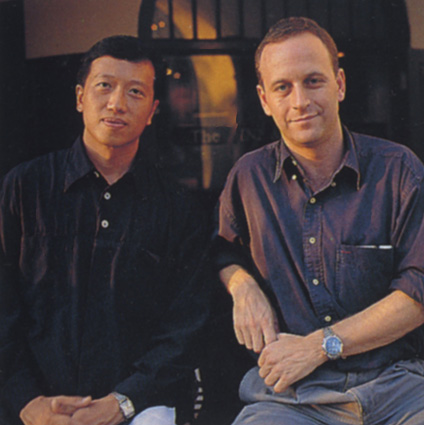 “There is no question the industry is suffering, particularly in south-east Asia. I mean, whole economies have been crushed. We, along with most agencies, have felt it hardest in Malaysia, Indonesia and Thailand. Even the Singapore ad industry has felt the pinch I guess we’ve been OK because of our absolute focus and energy. You have to be even more competitive. The weaker agencies that delivered the generic work were hit hardest. If you don’t have a point of difference, how can you survive? Clients want even better advertising and ideas for their money – that’s got to be a universal issue”.
“There is no question the industry is suffering, particularly in south-east Asia. I mean, whole economies have been crushed. We, along with most agencies, have felt it hardest in Malaysia, Indonesia and Thailand. Even the Singapore ad industry has felt the pinch I guess we’ve been OK because of our absolute focus and energy. You have to be even more competitive. The weaker agencies that delivered the generic work were hit hardest. If you don’t have a point of difference, how can you survive? Clients want even better advertising and ideas for their money – that’s got to be a universal issue”.
One of the great strengths of the Saatchi creative department is the stability and consistency of all teams. Their creative performance does not rest with one or two ‘star’ teams but rather on the whole department. It’s a record Droga is very proud of as he highlighted the performance of all seven teams.
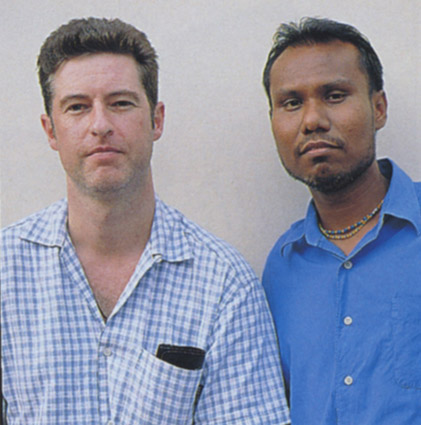 “I’ve surrounded myself with a lot of very talented, hungry creative. Some even more arrogant than me. It’s a very competitive and motivated group of people. It’s more like the United Nations than an ad agency. Although the majority of creative are Singaporean, we have people from America, India, Malaysia, England, Australia and Taiwan. Despite their different styles they all bring something fresh to the table. I’ve definitely got the best heads of TV and print production around: a fellow Australian, Haydn Evans and Ester Yue, a Singaporean veteran.
“I’ve surrounded myself with a lot of very talented, hungry creative. Some even more arrogant than me. It’s a very competitive and motivated group of people. It’s more like the United Nations than an ad agency. Although the majority of creative are Singaporean, we have people from America, India, Malaysia, England, Australia and Taiwan. Despite their different styles they all bring something fresh to the table. I’ve definitely got the best heads of TV and print production around: a fellow Australian, Haydn Evans and Ester Yue, a Singaporean veteran.
“As for the creative teams, well they’re all coming into their own. On one had you’ve got the quiet achievers, Edmund Choe and Juggi Ramakrishnan. While on the other there’s the brash young Americans, Ted Royer and Ross Ludwig.
“There’s Andy Clarke, who is not only incredibly consistent, but one of the most disciplined art directors I’ve ever worked with. Then there’s the maturity of Francis Wee mixed with the aggression of Calvin Soh.
“Then there’s Rowan Chanen, Larry Ong, Tay Guan Hin, Rashid Salleh and Peter Moyse. The list of great talent and potential talents like our junior creatives Maurice Wee, Trudy Hshieh, Renee Lim and Yong Li Yung, goes on. Together with Haydn (Evans), Ester (Yue), and Alvin Chin in the studio we have a strong team with most of them ranking very high in your Campaign Brief Asia Creative Rankings (see 1998 Creative Rankings table at very bottom of this post).”
 Droga says: “While one team has a strong presence at Cannes, another will make an impact at The One Show or D&AD, then another team will do well at AWARD. It’s great when one team’s succeeded it motivates the others. But even more importantly, everyone gets on and has a laugh amidst the pressure we put ourselves under”.
Droga says: “While one team has a strong presence at Cannes, another will make an impact at The One Show or D&AD, then another team will do well at AWARD. It’s great when one team’s succeeded it motivates the others. But even more importantly, everyone gets on and has a laugh amidst the pressure we put ourselves under”.
Droga said his objective has been to build a creative department that, if someone leaves – and he realizes of course that some will – then another team will fill the void so the personality and creative consistency of the agency doesn’t suffer.
The ‘personality’ of the agency has been greatly enhanced since their move from the boring high-rise office the agency has occupied for years to their middle of the action Clark Quay premises within an old nightclub and Karaoke Bar.
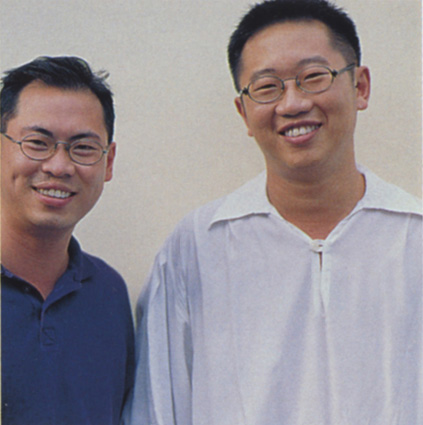 “Our old office was like a bank or an accounting firm. Very predictable. Very sterile. I felt it was demoralizing on everyone in the agency. Now all creative teams are housed in the old Karaoke booths and there is a ‘creative’ atmosphere thr
“Our old office was like a bank or an accounting firm. Very predictable. Very sterile. I felt it was demoralizing on everyone in the agency. Now all creative teams are housed in the old Karaoke booths and there is a ‘creative’ atmosphere thr
oughout the entire agency. People enjoy coming to work and clients even get a buzz out of it because it’s so different to what they are used to.”
Comparisons to the heady days of OMON in Australia, which Droga shared in and helped create, are natural.
“OMON was a hell of a lot of fun. And as much as I liked the work we did I was happy to move on. It was also a very important move for me personally. I guess as a joint CD there always had to be a consensus. Coming to Singapore was quite liberating. Whether it was a success or a huge failure, I’ve had to trust my own instinct. At the end of the day I’ve enjoyed doing it my way. Also at OMON I was obsessed with writing most of the stuff myself, where as here, I’m still writing but I’m definitely playing much more of a CD role. Getting the work out of the teams and pushing them to be obsessed. I suppose the more they all succeed the more I do.”
 One of the ‘tactics’ Droga employed to push his teams to think differently was to ban headlines on print work in the creative department for a month. Apart from the fact that much of their work has to work around the region, and therefore visual ideas work better, he believed it added a lot of discipline, keeping ideas single-minded and not relying solely on a clever headline.
One of the ‘tactics’ Droga employed to push his teams to think differently was to ban headlines on print work in the creative department for a month. Apart from the fact that much of their work has to work around the region, and therefore visual ideas work better, he believed it added a lot of discipline, keeping ideas single-minded and not relying solely on a clever headline.
Another ‘tactic’ was to have floating art directors for variety.
Droga says he has aged more in the last two years than ever, describing the pace and quantity of work in the Singapore market as “basically outrageous”.
“Coming into Singapore was always going to be a challenge. A few agencies already had quite good creative reputations. But I felt there was an opportunity to go beyond doing ads for small clients. To do it on TV. Sure it’s a print market, you can’t escape that, but Singapore was definitely ready for a more serious approach to creativity”.
 He believes it goes back to having the right people around you: “I’m certainly not on a one man mission, everyone is striving for the same thing. We live through the same highs and lows together. Sure I wish all our clients saw the big picture, but as long as we win more battles than we lose it’s worth the stress. The problem in this business is there is no finish line, it just keeps going. So who knows what’s around the corner but we do know we still have a long ay to go.
He believes it goes back to having the right people around you: “I’m certainly not on a one man mission, everyone is striving for the same thing. We live through the same highs and lows together. Sure I wish all our clients saw the big picture, but as long as we win more battles than we lose it’s worth the stress. The problem in this business is there is no finish line, it just keeps going. So who knows what’s around the corner but we do know we still have a long ay to go.
“The last two years have been good and as much as we like to think we are great we recognize we’re by no means where we want to be. We still get depressed watching the Shots reel and reading Archive. I imagine that’s what drives us, we’re trying to compete on a global level.”
Droga says working in Singapore is much more frantic and involves longer hours compared to Australia which he says is much more relaxed.
“Australia looks to outdo the guy down the road – it’s not pushing itself as hard as it could. I think Australia is becoming very insular and most agencies are becoming very conservative. Asia is such a competitive market you have to aim to out do everyone not just that guy down the road. We are more influenced by what’s happening around the world. I miss Australia and I love Australia. However, if I was to go back there now I think I would be really bored. I mean, Asia is leapfrogging ahead despite the downturn. My teams here are having five briefs land on their desk each week!”
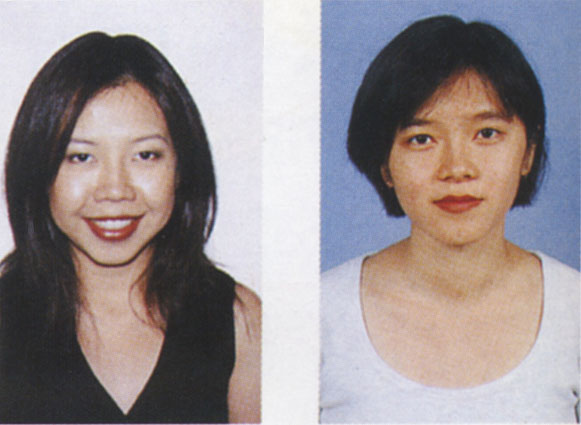 So does he believe their Advertising Age International Agency of the Year win will shake up agencies in Australia?
So does he believe their Advertising Age International Agency of the Year win will shake up agencies in Australia?
“I don’t know if our win will ‘shake up Australia’. I mean, we Aussies are a cynical bunch! But I do believe Australia has to take a good hard look at itself. Consider AWARD last year. The three most awarded agencies were non-Australian – two Singaporean and one from New Zealand. If that doesn’t shake people up, what the hell will? It’s unbelievable that Australia can’t dominate its own award show! Also, the fact that Singapore does better than the whole of Australia at Cannes, The One Show and D&AD should also shake them up.”
With Singapore setting the pace Droga’s energy will now turn more to his regional CD role.
“I have deliberately spent more time in Singapore over these two years because I needed to have a showcase office within the Saatchi network. With Singapore a shining star you can attract the right people in other parts of the region. If I only had a regional role I’d be spreading my role too thin – you can’t arrive at an office, spend four days, solve all the problems, and then leave. For me it’s more a case of getting the right people in the right offices. In Hong Kong, we’ve just put in place possibly the best creative department in town, same in China, Vietnam and Taiwan so I’m hoping this will pay dividends for us in the coming year. I could never have attracted these people into our other offices if it weren’t for Singapore’s reputation. My priorities are to ensure Singapore’s continued stability and growth and also focus a lot more on some of our other offices, particularly China and Hong Kong. Our office in China is growing at a rate of about 150% a year. At this rate it will be a billion dollar operation in 5 years. It’s amazing, it’s already the largest agency in China, now the key is to match the growth with creativity.”
So, what’s next? “Hopefully bigger and better things,” says Droga. “I’m too competitive and too passionate to be come complacent”.
David Droga’s fast-track to the top
At still only 29, Droga’s achievements verge on the unbelievable. After winning AWARD School in Australia at the ripe old age of 18, he joined OMON, the hottest agency in the country, as its very first employee. In the years that followed, Droga quickly established himself as one of Australia’s most awarded writers, collecting numerous gongs at AWARD, D&AD and Cannes.
At 24, he was rewarded with a 25% stake in the agency and promoted to joint Creative Director. The following year, OMON was awarded 1993 Agency of the Year (for the second time) by Campaign Brief Australia.
But as OMON began the process of a potential merger in 1995, Droga became restless. And when the agency merged with McCarthy Watson & Spencer, an unlikely suiter, he cashed in and began looking for new challenges. At only 27, he was lured to Saatchi & Saatchi Singapore as Regional Creative Director by Bob Isherwood the network’s Worldwide Creative Director.
Just a few months after this interview Droga was approached to take on the ECD role at Saatchi & Saatchi London.
Photos from top:
1. Opening spread of Campaign Brief Asia’s interview with Droga.
2. The Saatchi & Saatchi creative department from 1998.
3. Andy Clarke.

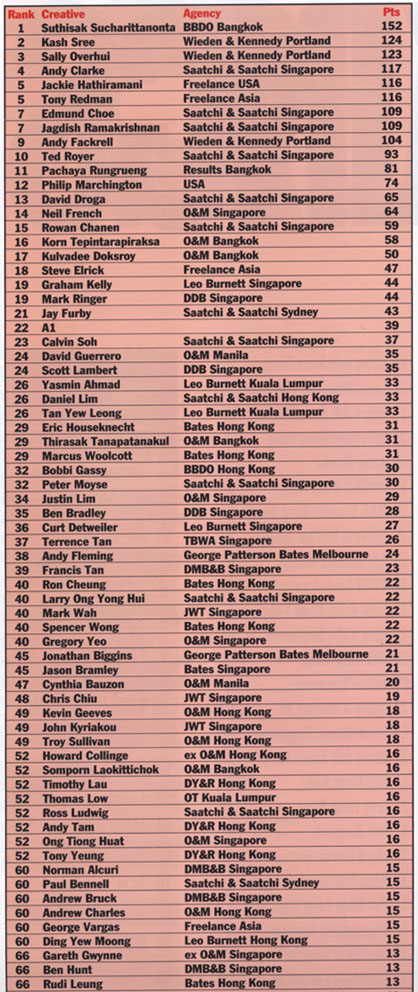
5 Comments
Couldn’t you do captions under photos 19 years ago Kim?
‘Where are they now?’ would make a great follow up story.
Who’s still rocking?
Who’s living it up?
Who’s still hustling?
Not just Droga’s boys (and girls) but all those on the CBA Creative Rankings.
Andy Clarke – ex long time at JWT USA
Ross Ludwig – ?
Ted Royer – ECD at Droga5 NY
Jagdish Ramakrishnan – ex O&M China now on year long break
Edmund Choe – TBWA Singapore CCO
Calvin Soh – Retired to Little Red Dot
Francis Wee – back at Ogilvy Singapore as ECD
Larry Ong – ?
Rowan Chanen – Freelance
Peter Moyse – Freelance
Rashid Salleh – ?
Trudy Hshieh – ?
Maurice Wee – CD BBH Singapore
Tay Guan Hin – regional ECD at JWT
Haydn Evans – SixToes film company Singapore
Alvin Chin – ?
Ester Yue – retired from Saatchi Singapore after long career
Renee Lim – BBH Singapore
Yong Li Yung – ?
David’s greatest achievement in this cut-throat, ego-driven business, is to have always maintained the respect, encouragement and affection of his peers. Being a respected ad man is one thing. Being respected as a man is something else again.
As someone asked, I thought I might as well update myself: when this follow-up article on Dave Droga was published, I was global head of copy at HSAd in Seoul. In between, I worked at various agencies all over, including BBH NY. I start a new gig in early 2023. Outside advertising, I’m big on Bitcoin.